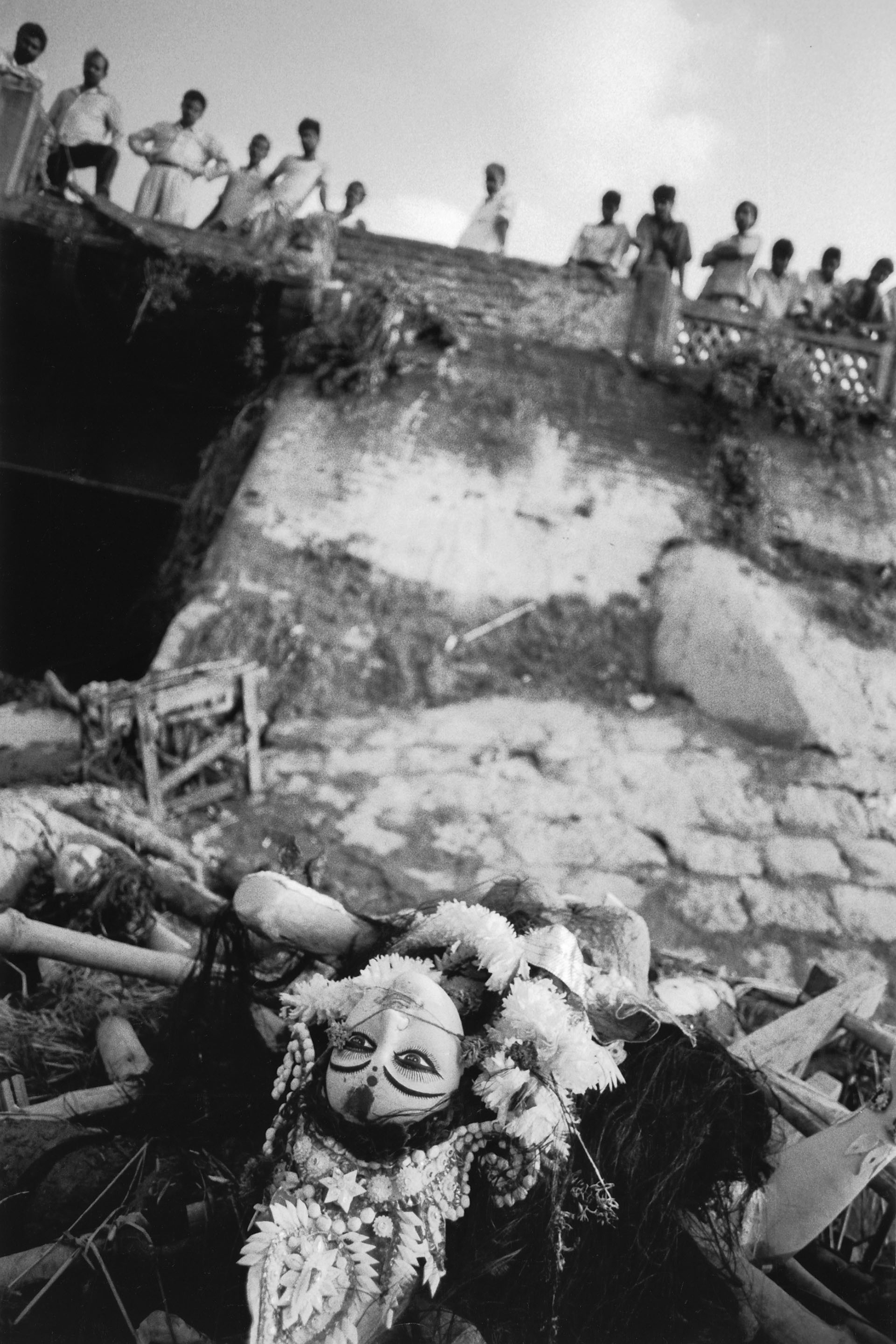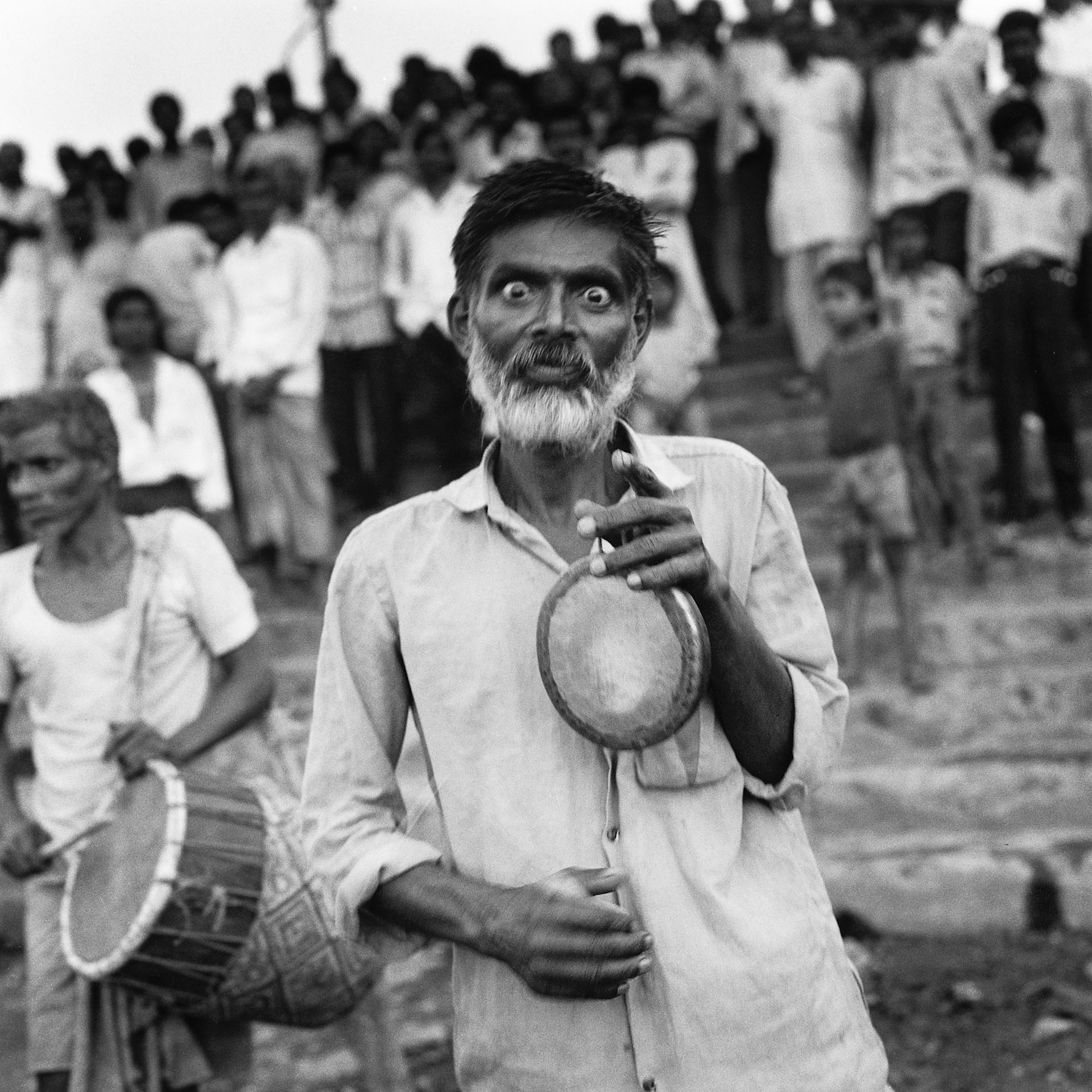1993
Calcutta – Durga Puja
One of the most popular Indian deities is Durga, a symbol of prosperity and of victory over evil. The gods, threatened by the demon Mahisasura, turned to Shiva the Destroyer for protection, and Shiva in turn solicited his wife Parvati. As Durga, an avater shaped jointly by all the gods and represented with ten arms, three eyes, black flowing hair, and riding astride a lion, she killed the demon coming out of the body of a slain buffalo using the trident given to her by Vishnu. As the symbol of victory over evil and of female energy, Durga, although not an indigenous deity, is worshipped and her protection sought all over Bengal and in Calcutta.
In 1757 a Bengali who had financially backed the East India Company at the Battle of Plassey made a social event out of the Durga Puja to end the monsoon. The Puja reaches its climax on the tenth day when the images are carried in a festive procession to be immersed in the Hooghly whereupon the disposal of the statues starts without delay.
Scores of youths plunge into the chilly river to salvage the wooden frames, satin clothes, and paper diadems before the strong currents sweep them away. As sacred as the immersion ritual is, the salvaging operations could not be more down to earth: What was religious for many is unalloyed commerce for others. Some of the youths come from as far away as the Sundarbans. As silk will make pillow cases more glossy, one main target are the paper diadems that can bring 5 to 15 rupees. The main recycling trade, however, is in the images’ wooden frames. Thick ropes at some distance from the place of immersion hold back the frames, which are then towed towards the banks at low tide and under cover of darkness. By sunrise, whole truckloads of wood are ready to be dumped in the godowns of nearby timber merchants.
This event was documented as part of Delta. The Perils, Profits and Politics of Water in South and Southeast Asia.
Assignments
- 2010–2018Afghanistan – Glacier Walks in Times of War
- 2012Burma Revisited
- 2009Swat – Mutilated Faces
- 2007Kazakhstan – Oil Great Game in Central Asia
- 2005Turkmenistan – A Journey under Surveillance
- 2004China – Farewell to Kashgar
- 2001–2010Afghanistan – A Thirty Years War
- 2001China – The Transformation of Xinjiang
- 2001Afghanistan – Drought and Famine
- 2000Kashmir – Paradise Lost
- 2000Ulanbataar – Children’s Underworld
- 2000London – Going Southwark
- 1999Indonesia – East Timor: Times of Agony
- 1998–1999Borneo – Destruction Business
- 1998Afghanistan – Economy of Survival
- 1997Cambodia – Quiet Days in Pailin
- 1996Tajikistan – Forbidden Badakshan
- 1995Iran – Roads to Isfahan
- 1994–the presentAngkor – The Mercy of Ruins
- 1994Bangladesh – Sandwip: An Island disappears into the Sea
- 1993Calcutta – Durga Puja
- 1992–1996Indochina – Legacies of War
- 1992Cambodia – Resurrecting a Country
- 1991–1992Burma – Behind the Bamboo Curtain
- 1990Ahmedabad – Cotton Mills
- 1987China – The Pulse of the Earth
- 1978–1980Greece – Lavrion Silver



